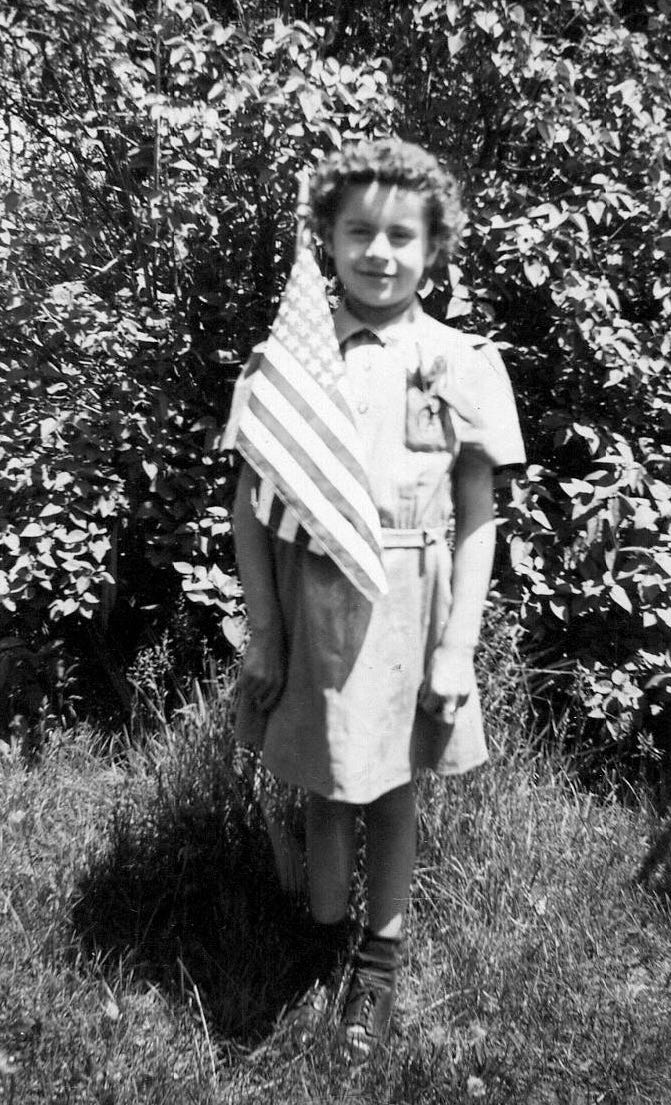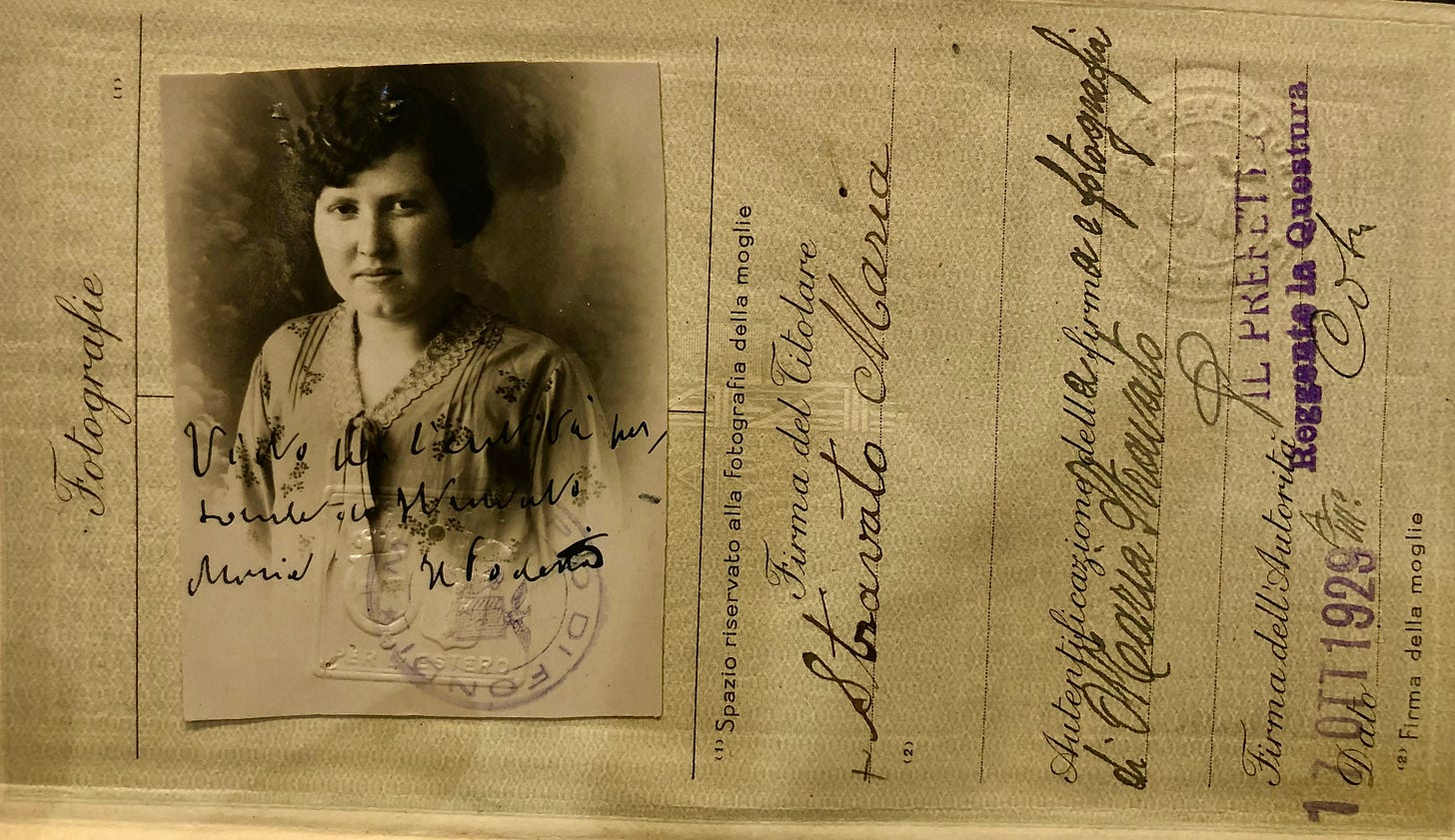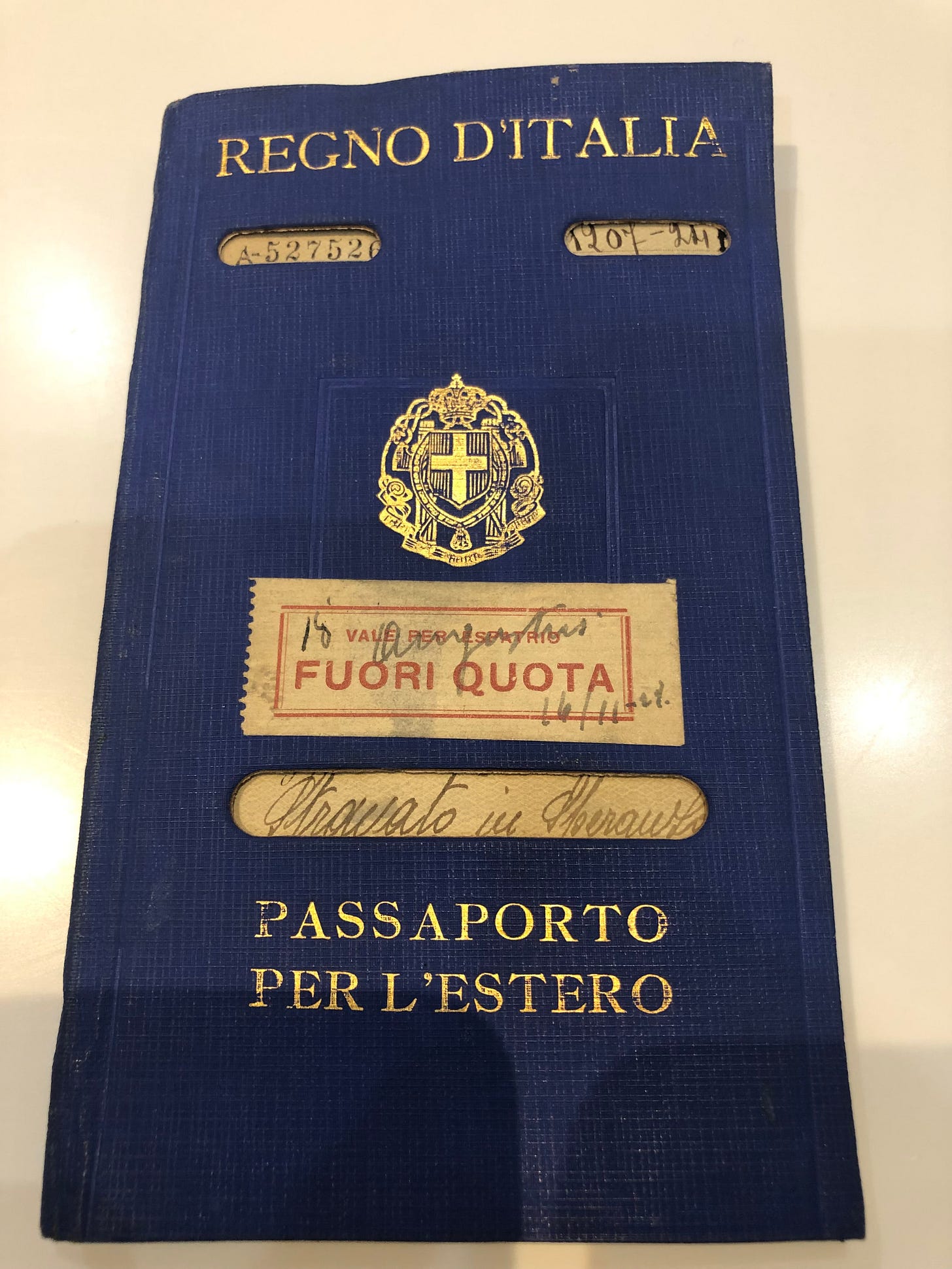If you’re seeing this newsletter for the first time, welcome! If you want to get off this list, just click “unsubscribe” at the bottom of this message. If you’re not already subscribed, you can sign up for free to receive new (short!) posts every couple of weeks.
One of my summer projects is going through my late mother’s old photo albums and scanning the “keepers” for posterity. My Mom and I shared a love of history and even visited Ireland to explore her family’s roots together. Yet, looking through these photos, I have so many unanswered questions, such as: why did you dress me like such a dork? And more importantly: tell me more about your Dad, who died when you were seven, and your uncle Babe, who served in World War II.
I have a little more information on my Dad’s side. My sisters, cousins, and I have preserved some of the most memorable “Grandma-isms,” some of which made their way into The Italian Prisoner. It’s been tough to piece together my grandparents’ immigration story, even though I have some documents my aunt saved. For example, why is my grandmother’s 1929 passport stamped “out of quota?” It should mean she exceeded the allocated number of immigrants permitted from Italy that year, thanks to President Herbert Hoover’s newly established quotas. And yet, she was allowed in, and my father was born 10 months later—an American citizen by birthright.
Whenever I give a book talk, I share the origin story of The Italian Prisoner and the real people who inspired the novel. Many of the Jackson Barracks POWs had passed away by the time I got around to writing about them, but one was still alive and well and living in New Orleans. Thanks to the generosity of his family, I got to interview Giovanni DiStefano and hear his vivid recollections.
My research partner, Linda DiMarzio Massicot, herself the daughter and niece of Sicilian-American women who married Jackson Barracks POWs, had recorded some priceless interviews with her mother. Though her mom and aunt had passed away, Linda helped me find one of the other Sicilian-American wives still alive, the vibrant and spry Saints fan, Marguerite Grafagnini Maranto.
I’m so grateful I had a chance to meet and interview Giovanni and Marguerite before they both passed. I conducted a lot of research on the internet and through archives, libraries, and other sources. But there’s no substitute for first-hand stories to add color and texture to a novel. [You can read more in this article I wrote for 64 Parishes magazine, and in my Substack archives.]
As I’ve been contemplating all this, last week The Atlantic published a reprise of a 2022 article by anthropology professor Elizabeth Keating about her helpful book, Essential Questions: Interview Your Family to Uncover Stories and Bridge Generations.
“Just as the precious oral literatures and histories of whole communities are being lost the world over through rapid change, migration, language death, and a failure to ask, there is a risk that your family’s personal stories, too, will be lost forever.”
–Elizabeth Keating, author of Essential Questions
If you’ve got older people in your life, take the time to ask them to tell you their stories and do your best to document them for posterity. You never know what you might learn.







There were too many to choose from. Not to mention the haircuts.
living for this!!!!!!